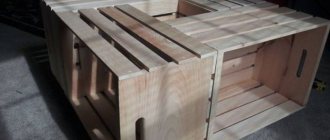- December 6, 2020
- Equipment
- Vasilisa Odoevskaya
An ax is a multifunctional tool and people use it both in everyday life and in construction, tourism, and travel. It happens that axes are sold without a cover, but this, of course, is not safe, and also not convenient. This article contains step-by-step instructions on how to make your own ax case.
Leather is such a durable material that is easy to work with. However, despite how simple it is, there is always the possibility of completely ruining the capricious material.
Why do you need a cover?
First of all, it is worth noting that the case for any ax (be it a huge household ax for chopping wood or a small garden hatchet, or even a case for a fire ax) primarily serves to ensure the safety of its owner. In addition, using the case, you can add to the instrument a device for attaching to a belt or any decorations of your choice.
Before you begin, it is important not only to know how to make a case for an ax with your own hands, but also to choose the material for the future product. It is best to use leather, whether artificial or natural; it is a matter of price and taste. It is the leather, because it will not quickly rub against the ax blade, unlike ordinary fabric, that will not stretch when worn and used, maintaining its original shape.
How to make a case for an ax with your own hands
This video tutorial is about how to quickly make a neat, small-sized case for an ax.
As you can see, it is not difficult to use. No more difficult than in a standard case. At the same time, it has suspensions, it is significantly smaller in size and is quite simple to manufacture. There is a suspension on a belt, a simpler one on carabiners. In order to make a case for an ax, you will need a PVC gutter for the drain. It is thermoplastic and therefore well suited for our task. It is easy to work with and is just the kind of material you can work with with your own hands. The width of the ax blade is 20 millimeters, so you need to cut 240 millimeters. We'll cut it to spare. It is also necessary to unroll, wash and shape the workpiece.
In order to make a case for an ax, we need thermoplastic material. A PVC pipe is suitable for this. You will also need a hair dryer. Hand protection is also needed. The hatchet itself, the shape of which will be used to create the case. You also need two pieces of foam rubber combined with a press.
Progress.
The first thing you need to do is this PVC blank. As soon as we start heating it, it will begin to lose its shape, dry out, that is, become smaller. So, we prepared the preparation. Now you need to wear protective gloves. We make a small bend in the workpiece. We put the money on the table and press it down with a wooden board.
Once again we warm up our workpiece and place the hatchet on it. For primary molding, cover with a press and press down. For final molding, we warm it all up again and press it out a second time.
Now we make the suspension.
The suspension can be made with a rigid one from the same material. But you can make it more flexible and soft. In order to determine the location of the suspension, we determine the center of mass by crossing the plumb line at different points. Now we need to determine the place where we will make the fastening. We will make it with one or two eyelets. The fastening must be done in the place that is as close as possible to the handle, and is located in the suspension area. And as low as possible, but in the center of mass. Now we need to make 2 holes. Let's cut off the excess and grab it.
Next, insert 2 screws into the hole and begin molding. We're filming. We remove the screws. Take a backing and a punch. Punch holes in the belt. Now you need to combine them and clamp them in a vice. The product is almost ready, all that remains is to cut off the excess and add another grommet for beauty. At the last stage, the PVC cover for the ax needs to be finalized by removing the excess on an emery wheel.
Types of axes
The history of the modern ax is the stages of transformation of the American ax for cutting wood. The colonists arrived with European patterned, beautiful axes with a narrow blade and shaft that curved gracefully from top to bottom. They were effective on the major tree species found throughout Europe, but were ultimately unsuitable for the vast forests and huge trees that the settlers encountered.
Most modern axes have steel heads and wooden handles, typically hickory in the US and ash in Europe and Asia, although plastic or fiberglass handles are also common. Modern axes are sorted by use, size and shape. Representatives with short handles, designed for use in one hand, are often called handheld. Hatchets are small axes with a handle, often with a hammer on the back. Being an easy weapon to make, axes were often used in battle.
Traditionally, handles were made from hickory, with their length varying depending on the task at hand. Attaching the handle was a complex process involving screwing, planing and wedging, which was usually controlled by the ax owner. These graceful curved handles with a yellowish-brown tint only became popular in the mid-19th century with the advent of contour lathes, which were subsequently adapted to the making of weapons. Well, now many people use a tourist ax sold in a case, since it is compact, modern and lightweight.
You can also touch on the mythical additions to this instrument. Steel axes were also important in superstitions. There were rumors that throwing an ax could protect against hail. Sometimes the ax was placed in crops with the cutting edge pointing toward the sky to protect the crop from the elements. An upright ax hidden under the windowsill of a house would ward off witches, and an ax under the bed would “guarantee male offspring.”
Suitable materials for sewing
During manufacturing, it is necessary to select the right material to implement the idea. The fabric for a suitcase cover must be strong and durable, as it is often cleaned.
These include:
- Waterproof spandex. Its advantages: light weight, wear resistance, wide range of colors, strength, dirt-repellent properties. The material does not fade, stretches 5 times its original length and quickly returns to its original state. Disadvantages include the possibility of puffs forming and sensitivity to sunlight, due to which the product may lose color over time.
- Neoprene. It has an unusual texture and resembles a small honeycomb. There are several varieties of neoprene, designated by letters. The following options are suitable: LS, S, HS. The fabric also varies in softness. This point must be clarified when purchasing. It has good thermal insulation properties due to its porous structure. Can withstand temperatures from +95 to -55℃. There is no need to worry that the liquids inside the bag will freeze in the luggage compartment of the plane. In addition, it is environmentally friendly, durable, and resistant to sunlight. Despite all the advantages, the material has a number of disadvantages: it wrinkles a lot, requires special care - it cannot be washed in a machine, cleaned with stain removers, or dried near a radiator. It holds its shape well, so when folded it takes up more space compared to other materials.
- Elastic lycra. The material is almost impossible to find in its pure form, without admixtures of other fabrics. It is better to choose combinations with footer or viscose - these are the densest options. The advantages of the fabric include the ability to stretch 8 times without losing its original shape. In addition, lycra is easy to care for; stains on the surface can be easily washed off. The price range varies depending on the composition. However, such fabric can fade when washed, and it is easy to get a snag on it.
- Fabric burlap. A very durable fabric that has been actively gaining popularity in recent years. To sew a protective cover for a suitcase, you need to choose the maximum density. The advantages of burlap are: reliability, environmental safety, affordable cost. At the same time, the color palette is limited to just a few shades, the material is quite rough and may lose its shape after washing. Difficulties may also arise in the process of choosing a fastener for the case.
You need to choose which material is best for a suitcase cover based on personal preferences in color, price and density. However, it will not be superfluous to take into account the conditions and frequency of operation of the product.
It is also worth paying attention to the configuration and size of the bag itself.
Spandex From spandex
Neoprene
Neoprene Elastic Lycra Lycra
Sackcloth
Materials and tools
Before making a leather ax case, you should prepare:
- Hatchet.
- A piece of leather. This could be specially purchased material, or you can use old shoes to save money (especially since you don’t need much material). The leather must be thick enough, otherwise it may tear during the process of sewing together parts of the workpiece, or when wearing the finished case.
- Waxed thread, or just a very dense thick thread.
- Rivets for fastening the strap; if desired, you can use smaller rivets instead of thread.
- Sewing needle. It is worth choosing a thicker one: when working with leather, it may break off.
- Utility knife and scissors.
- Hammer.
- Mink oil.
- A drill bit or an awl, but it is better to use a fork, sharpened and flattened with a hammer.
- Paper and pencil.
- Adhesive tape, scotch tape.
- Pliers for gripping a sewing needle in case it gets stuck in the leather.
- Oil for soaking the skin.
Made of plastic
Making a cover is not difficult if you use plastic that softens when heated. Many similar artificial materials have these properties. The easiest way to make a case is from plexiglass or polyvinyl chloride.
- PVC pipe 100 mm, PVC or plexiglass sheet;
- hacksaw, saw, jigsaw;
- hair dryer, burner, metal bath.
In the case of using sheet PVC, make a drawing of the cover as described above.
It is better to outline the ax along with the handle. It is necessary to leave a margin of 10-20 mm around the perimeter.
Then do this:
- Mark the place for the bend (a strip slightly larger than the width of the butt).
- Heat the sheet in the middle of this strip.
- Place the ax and bend the plastic.
- The place where the ends meet is heated well, one is wrapped and welded.
- It is processed with a file or “sandpaper”.
- A lid is made from plastic and placed on top or secured on small hinges.
Sample
And again about safety: you should put the ax on paper folded in half and tape it along the blade, this way you can make further steps easier and protect your fingers from accidental cuts. Next, you need to outline the metal part of the ax (cutting edge, blade to handle), then step back from the drawn line and take into account the thickness of the edge of the ax. After this, you need to cut out the resulting template and try to try it on the ax blade. It is important to adjust the size of the “pattern” to the desired result: the blade must be completely closed.
Tips for choosing accessories
Much attention should be paid to the fittings, since a lot depends on the correct choice. Of these elements you will need to buy a zipper, sliders, if they are missing, a belt buckle and piping
In addition, you will need to take threads of the desired color, pins, needles, pencil, paper and scissors. A belt bag is not a very voluminous accessory, so it can be easily made on a sewing machine.
Type of lightning
Decorative elements serve as additional material. Everyone has the right to independently choose beautiful beads, rhinestones, appliqués, brooches, stripes and other decorations.
Skin cutting
You need to attach the existing paper template to the leather and make a pattern for the ax cover by cutting out a piece of material. You should cut out a little more than necessary, because the excess can be cut off during the process. After the workpiece is cut, you need to place it on the ax blade, check everything again (measure seven times - cut once), and then cut off any excess from the skin, if there is any.
After this, it is worth noting where the strap is attached and where the rivet or button will be inserted. This design will hold the sheath on the blade itself. After this, you need to measure the girth between these two points and cut a strap of the appropriate length from the leather. If the material is difficult to work with, then this is where leather oil comes in handy, or you can use water by simply wetting the product. These procedures will make the skin softer and more pliable, making it easier to work on making a case for an ax with your own hands.
How to make a case for an ax with your own hands
You can make a case for an ax with your own hands, especially if you often go outdoors or hunt. The case will not only prevent damage to nearby items, but will also eliminate the need to carry the instrument in your hands. The covers have one more purpose, in addition to those listed above, it is to protect the tool blade from dulling.
Patterns and details of the ax case.
Making a case from an old briefcase
The components of the case can be made from an old briefcase. Their dimensions must be equal to the dimensions of the existing tool.
First, you need to prepare a pattern, which can be drawn on soft paper, and then on the material that will be used in the work.
On the reverse side of the case, two narrow holes should be made, which must be positioned lengthwise, this is necessary in order to thread the belt through them. You need to sew fasteners on the back and front sides of the handbag, and then trim them with strips of colored leather, cut them according to a narrow pattern.
Making a case from a strip of leather
For work you will need: a piece of PVC, a hair dryer, gloves, laminate scraps, a press of foam rubber stuffed onto the boards.
If you do not want to do work that involves a machine or a needle and thread, then you can prepare a paper pattern that will allow you to understand what width the leather piece should be cut out. Below are instructions for making a case directly from leather. The material can be borrowed, for example, from the top of a boot.
To carry out the work you need to prepare:
- skin;
- Velcro for fabric;
- glue;
- scissors;
- pattern paper;
- pencil.
When making a strip, it is necessary to give it not a completely flat shape, but a trapezoidal one, as this is required by the design of the ax. Initially, the strip needs to be placed under the ax so that an isosceles triangle made of leather is on the right, and the rest of the handbag is directed up and to the right. Thus, the end of the long part of the strip should be parallel to the blade.
Afterwards, the long end must be wound and placed on the ax, bending the triangle in front onto the blade. The strip should be wrapped around the blade in this way several times until one end remains free; the excess must be disposed of. Velcro should be strengthened in the right places by first treating the surfaces to be joined with glue.
Sewing the cover
You need to take the resulting workpiece and fold it in half into the intended final shape; for ease of work, you can fix the layers with clothespins so that the skin does not move. Next you need to make a seam along the edge of the product, but since leather is a durable material, this is where additional tools come in handy.
You need to pierce both layers of leather through, and then stitch it with waxed thread. You can make holes in different ways: some people use an awl and pierce the leather by hand, some take a small drill and just drill holes, but most people who have extensive experience working with leather products mainly use a homemade tool.
This is a simple fork familiar to anyone. The teeth are sharpened with it and a quadruple awl is obtained. This method is chosen simply because the seam is much neater and smoother.
Take a fork and place it on the edge of the workpiece, hit the fork from above with a hammer and make holes in this way. This makes 4 suture holes, then the fork is inserted into the last, fourth hole, and the skin is pierced again. The end result is a seam with an ideal fixed distance between the holes.
After these manipulations are completed, you should sew a thread along the workpiece with a simple stitch, diving the needle into one hole and exiting in the next. Since this is not fabric, but leather, you should keep the thread taut all the time, and when you reach the end, make a loop over the edge and go in the opposite direction, creating a double stitch.
Of course, you can use any other stitching method, but when working with leather, it is this option that shows itself to be most effective in terms of speed, strength, durability and ease of production.
Case with flap and strap for butt
This option is similar to the second one (above), but is made in a slightly different way. Here only the lower edges of the main part are sewn. The tool is inserted from above, wrapped around the side strap and the loop is put on the button. Then lower the flap and fasten it. The ax is ready to be carried.
Case with flap
Sometimes it is first better to create a model of a product from cardboard or whatman paper, and then transfer its dimensions to the material.
- The ax is placed on the sheet and the main part is traced to the end of the eye. They try to do it carefully. When outlining, add 0.5-1 cm on each side (around the perimeter) for future seams.
- Then they turn the tool with the tip up and outline the butt or measure its width and mark it on paper. If this element has a rounded shape, then you have to add another 1–2 cm. To measure this part, it is best to use a flexible ruler or twine. Place them along the line of the width of the butt, mark the end, and transfer them to paper.
- After this, the tool is turned over, the other side is drawn and the valve is completed. Its shape can be any (rectangular, triangular, etc.), and the height depends on your preferences.
- The edges under the main part and the sides are sewn together. A loop is made on the valve, and a button is sewn on the cover, or button halves are secured on both parts.
It is better to choose a thread for sewing such a valve version with wired fiber - shoe thread. This will give a double guarantee:
- the wax layer will reliably protect the ax from moisture;
- a sharp metal blade will glide along such a thread and will not cut the seams.
A lighter version of this cover is made in the form of a rectangle. A loop with a button is also used as a fastener.
Large loops are sewn at the back for threading the belt. You can attach pockets, rings, and hooks to the free spaces to attach other tools.
This is the final stage of making a cover at home. Most people don't sew the loops on, but rather reinforce them to the back of the case with rivets, which seems like a reliable option. According to many tourists and experts, this is not entirely true.
The ax is a fairly heavy tool and pulls the case down. Once under such pressure, the rivets bend, cut through the material with their edges, and it subsequently breaks.
It is not advisable to make the loops very narrow, otherwise the tool will begin to pull back the belt. Their length is chosen so that the metal tool does not “run” along the belt. It should be securely fastened and move along the belt with little effort.
A loop
In the marked place you need to punch a hole or simply cut it out and secure the prepared strap with a rivet.
A rivet is a term used to describe a simple fastener, which is usually mechanical. It is a cylindrical shaft with two ends. One of them has a head, while the other, called a tail, does not. Rivets are the ideal way to attach two pieces of leather together. In addition, they can be used as decoration.
In order to attach the rivet, you will have to punch a hole in the leather. The hole size should be the same as the rivet shank. The next step is to insert a rod into one side of the hole and attach the cap to the other. If you want to keep the cap rounded, you should use a special hammer that has a concave striking element, but if there is no such hammer, then you just need to drive one part of the rivet into the other with a regular hammer.
On the reverse side, fasten a button or button, as is more convenient for you. There shouldn't be any difficulties with this.
Simple sheath for an ax, step-by-step instructions
So, sometimes you need to make a sheath for an axe; there can be different reasons - it got lost, got damaged, didn’t exist at all, etc. This instruction will help, if you have the simplest tools at home!!!, to make the necessary protection for you from an ax and vice versa. I repeat, this is not an instruction for actions “in the field”, this is a tutorial for measured, albeit not very long, work at home.
From the materials you will need: 1. Thick leather, in an amount that you yourself can easily determine, having a stripped ax in your hands. 2. Holniten-type rivets (male and dad are connected together and compressed, the inner part expands and it fixes the two halves together) 3. Glue (almost any, but it’s better to use a super moment in order to wait less) 4. Holster or regular button.
Tools: 1. Scissors 2. Marker 3. Notching or drill with a drill 4. Vise 5. Knife (where would we be without it) 6. Hammer for riveting the holster button. 7. Compass or template for marking holes.
So. Selecting the type of sheath for the axe. The simplest model to make is a piece of leather broken in half, repeating the configuration of an ax. The fold is usually made along the front (working) edge of the ax. First, measure out the piece of leather required for the product.
We outline the ax blade, not forgetting to make an allowance for joining the parts, usually 15-20 mm
We cut out half of the pattern, in order to fold it, mark the second symmetrical half. We outline and cut out completely.
Checking the stock:
Now you need to cut out the middle spacer so that the cutting edge of the ax rests against the end of the leather, and not against the rivets.
Now it's time for glue. Almost any glue is suitable for this material - its main task is not - just for subsequent operations of drilling holes you need to fix all parts of the pattern. If there is no glue, you can use clamps, but this is much more troublesome.
Press better for 15-20 minutes
The time has come to mark the holes - a carpenter's compass will work best here. I just happened to have an English vintage one...
After marking, it's time to make holes in the leather. You can use a drill, I have special cuts for leather. Although I don’t punch them, but insert them into the drill chuck and drill them like a drill - the hole turns out smoother, not as ragged as after a drill... The size of the drill and the notch is chosen to be slightly larger than the leg of the holniten, in my case the leg is 3 mm, and the notch is 1/ 8 inches (3.175 mm)
We insert the holnitens into the holes and put the caps on them (with a slight click)
Now comes the turn of the vice - the clamp needs to be clamped. The bent part of the leg is flared and fixed in the cap. You can use a regular hammer, but there is a danger of distortion upon impact, then the button will move to the side and spoil the entire appearance of the finished product, or maybe even just break off. In short, a vice is better, although there are special tools for this operation - a press, but for each size you need to have your own attachments.
We inspect the almost finished product and try it on an ax to determine the length of the fastener strap:
We attach the strap with the same holniten (options are possible - you can simply sew it on)
The strap will be fastened with a holster button - they are sold in stores like Pau-Roxo or Briza, the price tag is 30-100 rubles / piece
We rivet the button from the back side, and be sure to seal it with something - leather or, like me, an ordinary “Soviet” rag adhesive plaster to avoid scratches on the ax
Make the hole in the strap slightly smaller than the neck of the holster button. To make fastening easier, make a 2 mm cut on the top side of the strap.
Voila, the sheath is ready.
You can go along the edge with sandpaper, a grinder, or simply trim it with a knife.
Treatment and care
After you have made a leather ax case with your own hands, you should treat it with a moisture-resistant mixture. This will protect the leather from premature destruction, but will also protect the ax blade itself from rust. Moreover, it is worth lubricating both the internal and external parts.
Keep the blade sharp in the same way as a knife, using a whetstone. Keep it dry to prevent it from rusting.
Making a PVC cover
Using a hair dryer, bend the edge from the butt side, and then give it the desired shape.
Since the PVC-based thermoplastic trench can be easily shaped by hot air, it can be used to make a handbag. To work you should prepare:
- PVC piece;
- construction hair dryer;
- laminate trim;
- gloves.
The first step is to level the gutter using a hair dryer. The workpiece must be bent by 1/3. Until the material has cooled down, press down the fold with boards. Now you have to place the blade in the internal space of the workpiece, this is necessary in order to form the product. To do this, you need to heat it with a hairdryer and press it with a press.
Once the workpiece has acquired the required configuration, trimming can be done. Next, you need to bend the edge from the side of the butt using a hairdryer. Now you can make a sling attached to two eyelets. To do this, you need to prepare 2 holes on the cover. You need to make a hole using a punch in the upper part of the sling, then a grommet and a vice are used, which will allow you to fasten it in the upper part of the cover. At the next stage, a second hole is made to fix the lower part of the sling.
With any of the cases described above, the ax will be protected and will not damage the human skin while being carried.
Features and purpose
A cover is a useful thing that simplifies the care of your suitcase and maintains its attractive appearance. When getting ready for a trip, a traveler will not have to waste time and effort wrapping luggage with plastic wrap.
There are a number of advantages to using a suitcase cover:
- protection of the product from damage and contamination;
- saving time - care will be limited to simple washing in a machine;
- protection from unauthorized actions by airport employees or dishonest people;
- if the zipper breaks, things will not fall out;
- if you are overweight at the check-in counter, it is easier to get extra things out of it than from a suitcase wrapped in film.
A significant feature is the original appearance. Made with your own hands, this unusual case catches your eye. This means that it is easier to spot it on the baggage belt upon arrival. And you don’t have to be afraid to confuse your suitcase with someone else’s.
Thus, a suitcase cover is a necessary thing. It would be a great idea to make it unique as well. All that remains is to use your imagination and use some simple tips on how to make it happen.











